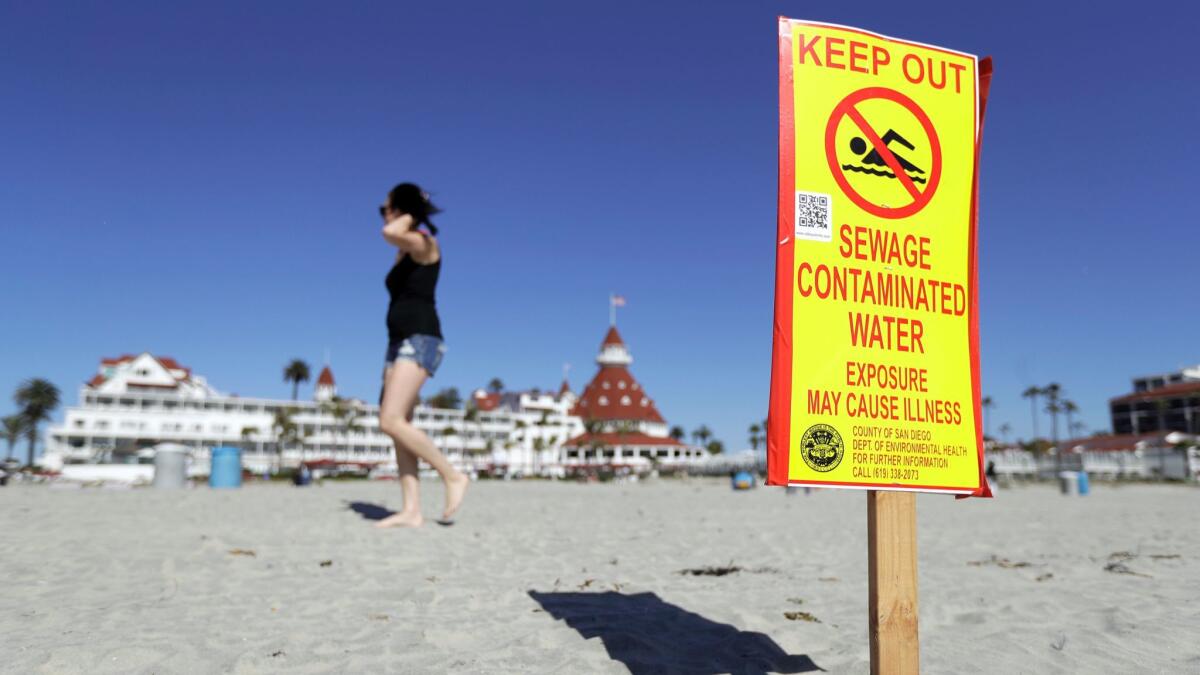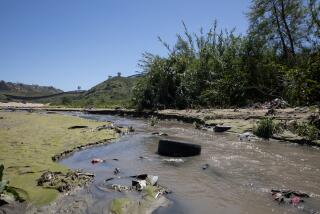San Diego officials to pressure U.S. and Mexico to fund a fix for Tijuana River pollution

SAN DIEGO — Elected leaders from across San Diego’s South Bay region announced a joint effort this week aimed at pressuring the federal government to support a long-term fix for the sewage pollution that routinely flows over the border from Tijuana, fouling beaches as far north as Coronado.
The cities of Imperial Beach, Chula Vista, Coronado and San Diego, as well as San Diego County, the Port of San Diego, the San Diego Regional Water Quality Control Board and the California State Lands Commission are poised to sign coordinated resolutions calling on the federal governments of the United States and Mexico to help fund a massive upgrade to the binational water-capture system at the border.
“The federal government is going to see vote after vote come out of the San Diego region in December with one clear message: It’s time for action,” San Diego Mayor Kevin Faulconer said in a statement. “Our unified voice calling on Washington and Mexico City is gaining traction.”
The identical resolutions are slated to be approved at each respective agency before the end of December.
Since the U.S. Environmental Protection Agency unveiled a detailed blueprint this summer for beefing up the water-diversion system, elected officials have made numerous trips to Washington to lobby Trump administration officials to provide funding for the plan.
The EPA has outlined more than $200 million in potential projects, including increasing the capacity of Mexico’s sewage system and beefing up the water-capture equipment in the Tijuana River. All U.S.-funded projects south of the border require matched funding from Mexico of at least 50%.
Officials in San Diego have in recent months coalesced around a group of preferred upgrades, which largely center on the construction of a new water-capture system on the U.S. side of the border. The main apparatus would be able divert up to 160 million gallons a day, reducing cross-border spills by about 95%. The price tag for the project is about $400 million.
“This joint resolution illustrates the unanimous support from local and state leaders to solve the ongoing cross border pollution crisis,” Imperial Beach Mayor Serge Dedina said in a statement. “We are not looking to support any half fixes to this issue. We all agree and endorse a proposed list of specific pollution control projects that are necessary for the Tijuana River and through this joint resolution we are now asking the U.S. EPA to move these projects forward.”
The current system includes pumps in the Tijuana River and in the canyons west of the San Ysidro Port of Entry basins that suck polluted flows out of the watershed before they can reach San Diego shorelines. However, sewage spills, power outages, clogged drains and even light rain can overwhelm the equipment, which has led to beach closures at the border on more than 840 days since 2015.
The pollution largely consists of raw sewage from leaky pipes and homes not connected to the wastewater system, although it has also been shown to include toxic chemicals, probably from unpermitted businesses along the border and illegal dumping.
Multiple cities in the San Diego region, as well as the state of California, have filed Clean Water Act lawsuits against the federal government to force action on the issue.
Smith writes for the San Diego Union-Tribune.
More to Read
Sign up for Essential California
The most important California stories and recommendations in your inbox every morning.
You may occasionally receive promotional content from the Los Angeles Times.











